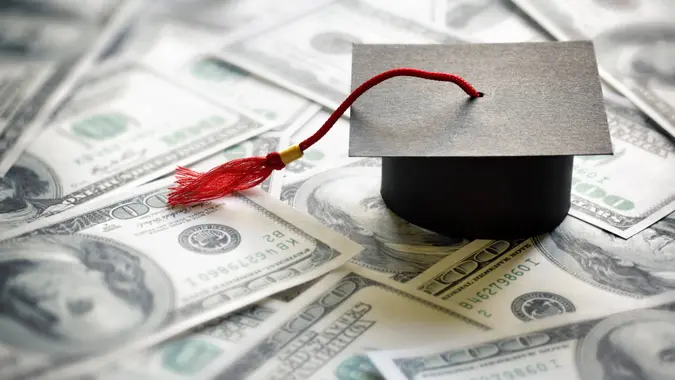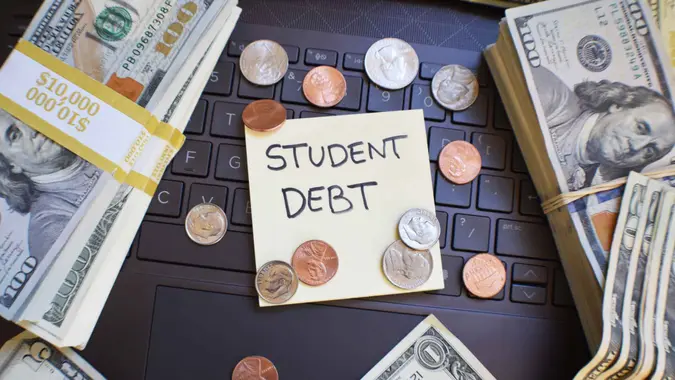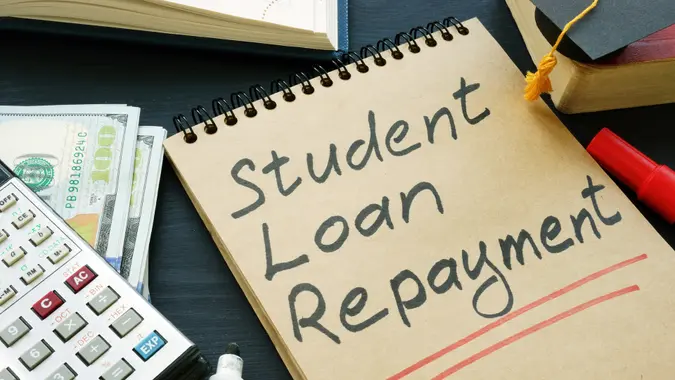$6 Billion Student Loan Forgiveness Settlement Will Benefit 200,000 Defrauded Borrowers

Commitment to Our Readers
GOBankingRates' editorial team is committed to bringing you unbiased reviews and information. We use data-driven methodologies to evaluate financial products and services - our reviews and ratings are not influenced by advertisers. You can read more about our editorial guidelines and our products and services review methodology.

20 Years
Helping You Live Richer

Reviewed
by Experts

Trusted by
Millions of Readers
A federal judge last week denied a request to halt a $6 billion class-action settlement over student loans in which about 200,000 borrowers claimed they were defrauded by the schools they attended.
The ruling was made on Friday, Feb. 24, by Judge William Alsup. It cleared the way for the U.S. Department of Education to start discharging loan debt for many of the 200,000 borrowers involved in the case, according to a report from Higher Ed Dive.
The decision is good news for those borrowers, even as millions more borrowers wait anxiously to see whether the U.S. Supreme Court will kill a broader federal student forgiveness program President Joe Biden unveiled last summer. Since then, the plan has been held up in multiple courts amid a series of legal challenges.
The Alsup settlement stems from a class-action lawsuit, called Sweet vs. Cardona (formerly Sweet vs. DeVos), which was first filed in 2019 when Donald Trump was president. It accuses the Education Department under former Secretary Betsy DeVos of “failing to process their Borrower Defense to Repayment applications.” The name change came after Miguel Cardona took over as Education Secretary under Biden.
Two for-profit companies — Lincoln Educational Services Corp. and American National University — along with the nonprofit Everglades College filed notices to appeal an earlier Alsup decision to uphold the settlement. Those organizations wanted to pause the debt relief on the grounds that they didn’t have enough time to avoid being included in the settlement, Business Insider reported. Alsup rejected their request on Friday.
In addition to the debt relief, the settlement also allows for a streamlined review of another 64,000 borrower defense applications. Eileen Connor, president and director of the Project on Predatory Student Lending — which represented the plaintiffs — wrote in a statement that Alsup’s decision “delivers a massive, long-overdue victory for our clients and validates the fact that this settlement is on solid legal ground.”
The Borrower Defense program was first instituted by the government in late 2016 and allowed borrowers who believed they were “defrauded” by their college or university the chance to file for having their student loans dismissed.
Claimants were able to seek federal student loan cancelation if they could prove they “were misled into enrolling or remaining enrolled at an institution through misrepresentations or false promises about key aspects of their program.” That might have been related to job prospects, the admissions process or transferring credits from previous schools where they were enrolled.
However, the class-action lawsuit came after Trump’s administration had delayed or denied eligible applications without cause, and because it was never settled, it carried over into the Biden era once he took office in 2021.
More From GOBankingRates
 Written by
Written by  Edited by
Edited by 

























